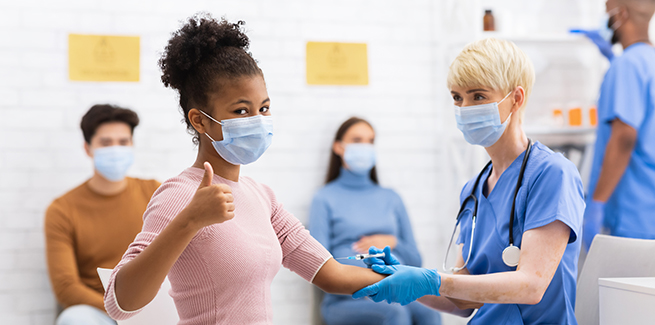Where are you in the vaccine queue?

As the United Kingdom kicked off its COVID-19 vaccination program earlier this week, Americans eagerly await a similar rollout in the US. And most are wondering when they’ll get their shots.
Veterinary healthcare workers are no exception.
Sadly, there are no clear answers as to when hospital staff can expect to get the vaccine. Given their status as essential workers in most regions, the answer is probably sooner rather than later, but it’s hard to get much more specific than that. The rollout of the vaccine, once approved, will be done on a state-by-state basis, and each state has its own plan and timeline.
If that happens, the first coronavirus vaccines could reach the American public as early as this weekend. But the US Centers for Disease Control and Prevention (CDC) cautions that supplies of any approved vaccine will be limited through the end of December, and then gradually increase in the following months.
That’s a long time to wait as coronavirus cases continue to spike and hospitals struggle to accommodate the sick.
Although the CDC didn’t have a hand in developing the vaccines, they’ve been working closely with state health departments to develop vaccination rollout plans to be implemented once a vaccine is approved and available. And once it is, the CDC is recommending that frontline human healthcare personnel and long-term care facility residents get the first crack at it.
Veterinary workers will have to wait. But for how long?
AVMA advocates for early vaccination for “essential” veterinary workers
“As the National Academy of Sciences and CDC developed guidelines for planning and operationalizing a vaccination response, the AVMA advocated for veterinarians and veterinary team members to be considered among those in a priority group based on the essential nature of veterinary services and the exposure potential they have in practice,” AVMA spokesperson Michael San Filippo told NEWStat.
Those guidelines established three different phases of vaccine distribution:
- Phase I assumes a limited number of doses are available and is subdivided into phases I-A and I-B.
- Phase I-A includes frontline human healthcare workers.
- Phase I-B includes people who play key roles in keeping essential functions of society running and cannot socially distance in the workplace, and those who are at high risk for severe COVID-19 illness. The definition of critical infrastructure workers varies by jurisdiction.
“While the ultimate decisions are made by the states, veterinarians and veterinary team members could potentially be accommodated in Phase I-B,” San Filippo noted, adding that the AVMA also coordinated with state veterinary associations as they worked with state health departments and other state officials to help determine vaccine allocation. You can read more about the AVMA’s advocacy efforts and the reasoning behind them here.
Essential or critical?
It depends. The two designations tend to be used interchangeably.
In the end, who gets vaccinated when is going to depend on where you live and how health officials define essential workers. In most areas of the country, veterinary workers have been considered essential workers since early in the pandemic, but not all: only 42 states issued some sort of guidance as to what sectors and industries they considered essential.
Colorado, for example, declared that veterinary care was a critical business in April in Public Health Order 20-24, which defined which businesses were considered critical and could stay open during the lockdowns earlier this year.
Katherine Wessels, director of communications for the Colorado Veterinary Medical Association, said her organization is working with Colorado health officials on tracking vaccination efforts. Like the CDC guidelines, Colorado’s COVID-19 Vaccination Plan calls for a phased rollout based on vaccine availability.
But whereas the CDC plan appears to put essential workers in Phase I-B, Colorado’s plan puts essential workers in Phase II. Based on that, Wessels said, “We’re guessing veterinarians would fall in the [Phase II] group,” which calls for vaccinations by spring of 2021.
Tim Atkinson, executive director of the New York State Veterinary Medical Society, told NEWStat that his organization is in close contact with state health officials in charge of the state’s vaccination rollout plan, and that they’re “expecting essential workers to be next in line after [human] healthcare workers.”
That probably means veterinary workers will be getting vaccinated sooner—maybe much sooner—rather than later. But in New York, as in Colorado, and as in the rest of the country, critical or essential or neither, everything hinges on supply.
Photo credit: © Prostock-Studio/iStock/Getty Images Plus via Getty Images



